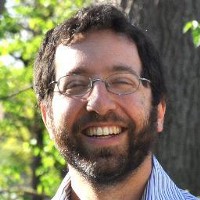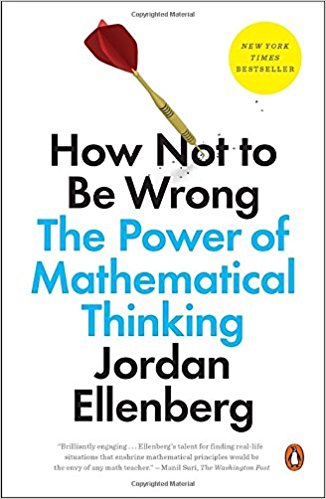How Not to Be Wrong Summary
7 min read ⌚
 The Power of Mathematical Thinking
The Power of Mathematical Thinking
What if someone came to you right now and told you that you are a mathematician by design? And what if that someone claims that by learning few more tricks from his book, you can at least learn how to be tricked less by the Greatest Mathematician of All, Life.
Jordan Ellenberg is the someone from the previous paragraph. And you can read all about the aforementioned tricks he knows in our “How Not to Be Wrong” summary.
Who Should Read “How Not to Be Wrong PDF”? And Why?
Mathematics doesn’t need to be all equations and no language. Jordan Ellenberg proves that it can be the other way around. So, you don’t need to be interested in math or logic to read this book. All you need to be interested in is common sense.
Because “How Not to Be Wrong” aims to teach you that what you find in math schoolbooks is actually common sense neatly broken down into comprehensible mathematical symbols. Ellenberg translates them into examples so that you can understand them better.
About Jordan Ellenberg
 Jordan Ellenberg is a professor of mathematics at the University of Wisconsin-Madison.
Jordan Ellenberg is a professor of mathematics at the University of Wisconsin-Madison.
A child prodigy, he has received a Ph.D. from Harvard University and an MFA in creative writing from Johns Hopkins. He is a regular columnist for “Slate” and has written few interesting articles for “New York Times” and the “Wall Street Journal.”
In addition to “How Not to Be Wrong,” Ellenberg has also authored a novel, “The Grasshopper King.”
“How Not to Be Wrong Summary”
Let’s just say that we’re targeting most of our readers if we start our summary with a sentence along these lines:
You don’t like math, do you?
And you are reasonably sure that it has no practical value whatsoever?
Don’t try to prove me wrong on the latter one, you warn us, because I know that even a genius mathematician of Richard Feynman’s stature felt that math was a bit abstract to his taste!
OK – we dig you! It’s not like we solve equations in our free time. And no – we don’t have a T-shirt with an Euler’s identity print! (Though, man, they sure look funny…) However, Jordan Ellenberg really convinced us that math is not a throwaway matter. So, at least give him – and us – a chance! Because we will try to prove you wrong.
Firstly, by claiming that you already know a lot more math than you care to admit (or are aware of, for that matter); and secondly, by demonstrating you that if you learn a bit more, you can basically cheat your way through life.
But, first thing’s first: you, the unconscious mathematician.
Now, Jordan Ellenberg has a funny way of describing math, and his definition is a good way to start. Namely, he claims that math is “the science of not being wrong.” A bit pretentious, you think? Maybe, but like almost everything else in math – not wrong.
You see, after Einstein, we started questioning even physics, and everything suddenly was much more relative than before. Math survived through this as well, as basically the only exact science of them all.
Speaking of surviving – here’s an excellent way to demonstrate to you how its exactness works. And how it’s not a purely mathematical matter, but common-sensical as well.
At one point during the Second World War, the U.S. Army intended to protect its planes better. In order to decide where the manufacturers should add more armor – they couldn’t add everywhere since that would have caused more fuel consumption – they examined thoroughly the damages on all of the returned planes.
The result?
As you can see yourself from Louie Zamperini’s plane, it was the fuselage which suffered the most, having far more bullet holes than the planes’ engines. After the study, the U.S. Airforce decided to reinforce the fuselage; and it would have done exactly that, if a mathematician by the name of Abraham Wald hadn’t realized that the seemingly straightforward study was flawed.
Namely, it didn’t take into account the bombers which were shut down. Those, Wald claimed, were surely hit much more in their engines.
The U.S. Airforce made a logical error we now call survivorship bias. In a nutshell: focusing merely on the things that have survived a process gives incomplete results.
Yes, this is math too. And, as you can see, it can save numerous lives. Not to mention some serious blushes.
And you know – and readily use – few similar techniques to tackle everyday issues. Or, unfortunately (if you don’t know them), you risk being tackled by them. Or, to use Taleb’s phrase, your risk being “fooled by randomness.”
For example, do you know that acting upon advices in books written by successful investors makes you a victim of the survivorship bias explained above?
After all, there are many others who failed to get rich at the market, and you don’t know any of those guys! Who knows how many of them are in the world right now!
Just like the World War II planes, Warren Buffett and Charlie Munger may be the exceptions.
Also, are you aware that the only thing a monkey needs to write the complete works of Shakespeare is a typewriter and infinite time? Just as well, many other things create patterns through sheer noise.
Believing in conspiracy theories, for example, may mean finding something which is there merely because you are a human and you’re built to see patterns even where there are none.
Finally, do you know that even a majority vote can be rigged if your agenda maker is savvy enough? It’s called the Condorcet paradox, and you may have been a victim of it once or twice.
Especially if you were living in Florida in 2000 and voted for Ralph Nader.
Still not interested in math problems?
Key Lessons from “How Not to Be Wrong”
1. Math Is the Science of Not Being Wrong
2. Be Wary of the Survivorship Bias – Especially When You’re Reading Books
3. You Can Rig Elections and Majority Votes
Math Is the Science of Not Being Wrong
Jordan Ellenberg has a funny way to define math. He claims that it is the science of not being wrong.
You may notice that he doesn’t mention where – it’s just not being wrong, period.
And he has a right to say that since math is basically never wrong. What it actually deals with is the underlying laws and patterns which govern the chaos around us. In other words, if you’ve ever argued against your friend’s claim that Steph Curry had a hot hand that February night against the Knicks back in 2013 – you’ve actually practiced math.
Because, as far as mathematicians are concerned, there’s no such thing as hot hands in basketball – or anywhere else. It’s just a case of taking into consideration fewer factors than you should. Or, in layman’s terms, a case of being wrong.
Be Wary of the Survivorship Bias – Especially When You’re Reading Books
Math problems have many practical applications. One of the most famous examples is the survivorship bias. It means that studies often focus only on the people or things which have survived through a process. And the survivors don’t necessarily describe the process in its entirety.
What does this mean in practice?
It means that thousands of people have tried becoming investment gurus using Warren Buffett’s strategies, but most of them probably failed. However, their failures are invisible to us, since these guys are not on TV and their books don’t sell a million copies.
The conclusion?
Warren Buffett’s strategy may be a good one – but he may have been merely lucky.
You Can Rig Elections and Majority Votes
This one’s scary!
With enough info, mathematicians are capable of creating a scenario where you’ll be voting for something entirely different from what you actually defend or are firmly against. Moreover, sometimes you can be tricked into voting for the exact same thing you would least want to vote for.
How?
Consider the 2000 Florida elections. The final results stated that Bush won 48.85 percent of the votes, Al Gore 48.84 percent (just 537 votes fewer) and Ralph Nader merely 1.6 percent. Common sense says – well, the majority won.
However, math says that that’s wrong. Because almost all of the people who voted Nader would have chosen Al Gore if there were only two candidates. So, Bush won even though between him and the second-best candidate, the majority preferred the latter.
Strange?
Try some counter-intuitive paradoxes such as the Monty Hall problem! The best part is that it doesn’t matter what you or anybody else thinks. What matters is that math can’t be wrong.
Like this summary? We’d like to invite you to download our free 12 min app, for more amazing summaries and audiobooks.
“How Not to Be Wrong Quotes”
I think we need more math majors who don't become mathematicians. More math major doctors, more math major high school teachers, more math major CEOs, more math major senators. Share on X A basic rule of mathematical life: if the universe hands you a hard problem, try to solve an easier one instead, and hope the simple version is close enough to the original problem that the universe doesn’t object. Share on X Knowing mathematics is like wearing a pair of X-ray specs that reveal hidden structures underneath the messy and chaotic surface of the world. Share on X Dividing one number by another is mere computation; knowing what to divide by what is mathematics. Share on X The Pythagoreans, you have to remember, were extremely weird. Their philosophy was a chunky stew of things we’d now call mathematics, things we’d now call religion, and things we’d now call mental illness. Share on XOur Critical Review
“How Not to Be Wrong” is one of the very few books written by an accomplished mathematician who happens to be a novelist as well. So, in other words, here’s math for you – explained in the best, writerly manner possible.
And when that happens, math can be a magical thing. There’s a reason why Bill Gates included “How Not to Be Wrong” in his 2016 “5 Books to Read This Summer” list. It is, simply put, a great, great book.
Emir is the Head of Marketing at 12min. In his spare time, he loves to meditate and play soccer.


 The Power of Mathematical Thinking
The Power of Mathematical Thinking




